He almost lost his arms to addiction. But Christiana Hospital did more than save his limbs
For two days, Anthony sat in the parking lot of Christiana Hospital, unsure of what would greet him behind the emergency room doors.
It was late April or early May, and he’d put off seeking treatment for about a month. He knew he might lose both his arms – doctors at Beebe Hospital in Sussex County had made that quite clear – but he was more concerned about going through withdrawal than his limbs.
About seven months earlier, Anthony had relapsed. Delaware Online/The News Journal is identifying the 51-year-old only by his first name at his request, given he is still early in recovery and seeking employment amid the ongoing stigma associated with addiction.
He had been down this road before – kicking opioids and remaining sober for several years, then relapsing for one reason or another. Each time, he’d been ashamed. He didn’t want this life. No one does, he said.
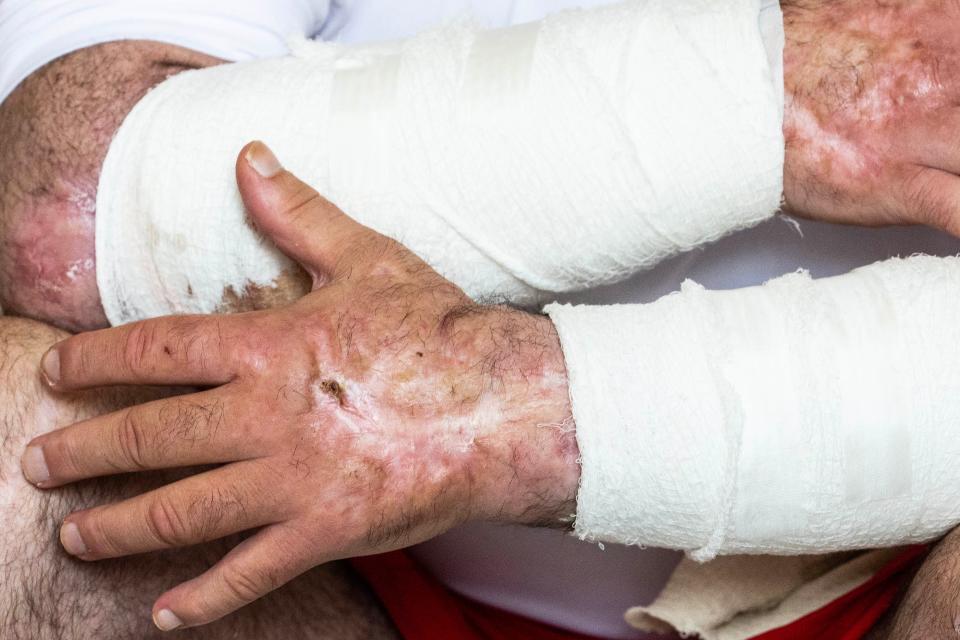
But this time was different. The drugs, which Anthony didn’t start using again daily until late October or early November 2022, were a new beast.
Xylazine, an animal tranquilizer used by veterinarians, hadn’t yet become dominant in Delaware’s fentanyl supply. But it was prevalent in the Philadelphia neighborhood of Kensington and was slowly cropping up in New Castle County.
Anthony had heard of “Philly dope” – fentanyl cut with xylazine, more commonly known as “tranq” or “zombie drug” – and some of its effects, which include wounds that often become infected and necrotic. But it wasn’t until he began using it that he realized just how powerful it was.
Now here he was, just months after relapsing, sitting in his car outside the hospital.
Cracked, dead skin blackened the entirety of his forearms. He hated how he looked and he was afraid that he’d leave without his limbs. Yet his greatest fear was something he already knew – dope sickness.
“It was, ‘How bad is this gonna hurt?’” Anthony said recently from his mother’s home in Lewes. “Here my arms are looking like they’re gonna fall off, and I’m worried about what the withdrawal is gonna be.”
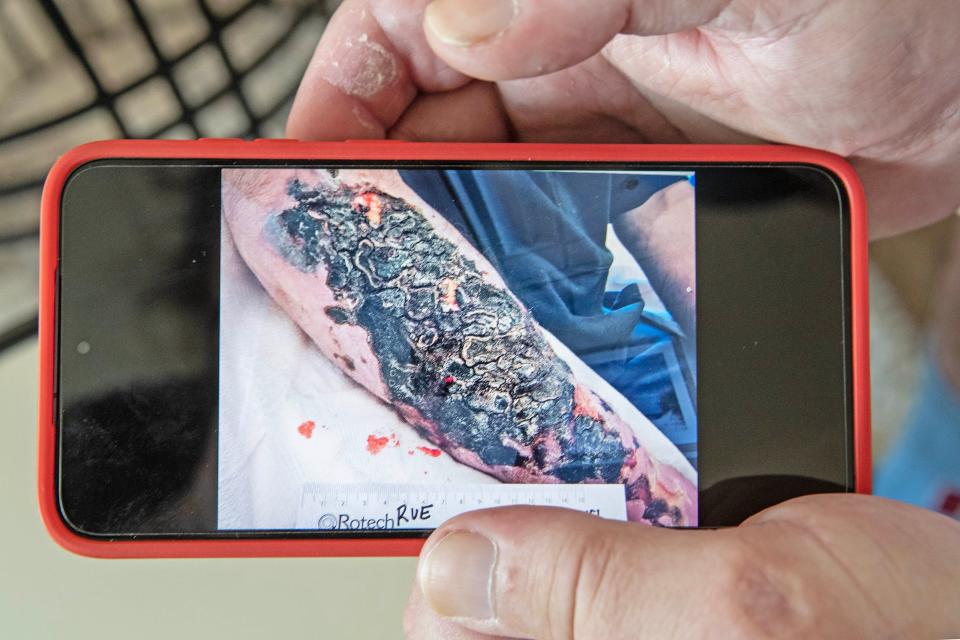
As the hours ticked by on that second day in the parking lot, Anthony had no way of knowing that Christiana Hospital, one of only a handful of health systems in the country with a uniquely comprehensive addiction medicine program, would change his life.
But finally, he mustered the courage to dial his mom’s number. With her on the line, he emerged from his vehicle and walked toward the glass doors.
Taking a breath, he stepped into the Stanton hospital.
‘This little pill will help’
Like the millions of other Americans who struggle with some form of substance use disorder, Anthony never expected to get hooked.
It was the late aughts and he partied often. “A lot of people were using cocaine” at the bars and parties he and his friends went to, Anthony said, and he was never one to say no.
At some point – Anthony doesn’t remember exactly when, though said it was in 2010 – he was introduced to Percocet.
“This little pill will help you feel better; it’ll bring you down so you don’t feel so high on coke,” he remembers being told.
He took the 5-milligram opioid. And then he couldn’t stop.
“It was that one time, just a Perc 5, and I was like, ‘Wow, that really worked,’” Anthony said. “From there, I was prescribed it for some reason, and it was pills for a few years. But once I was done with the prescription, it was straight to heroin.”
Anthony’s story is one of thousands across the U.S.
Around the time he became addicted to Percocet, the federal government was only beginning its nationwide crackdown on “pill mills” − facilities and doctors who readily prescribe painkillers without sufficient medical exams, diagnoses, monitoring or documentation.
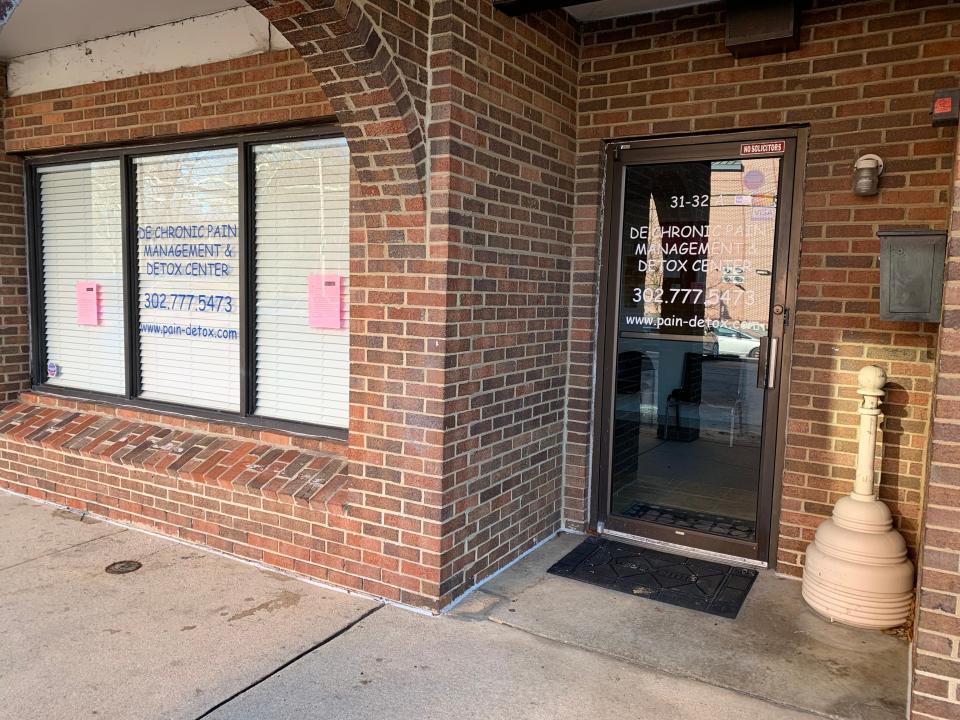
At these clinics, clients usually receive large quantities or high dosages in exchange for cash, and the facilities have little purpose other than to make money – and in turn, fuel users’ addiction.
Pill mills, which have long been deceptively marketed as “pain centers,” became increasingly prevalent in the early to mid-2000s, in large part due to the push by Purdue Pharma and other drug companies to flood the market with OxyContin and similar opioids. As people became addicted, others saw a way to profit.
“It was running rampant,” Anthony said. “Doctors were taking 300 bucks out the back door and giving people 180 30 mg Percocet. But then the government found out about it.”
While Florida – then America’s painkiller capital – was the initial target of government crackdowns in 2010 and 2011, state governments elsewhere also began shutting down these so-called "pain centers." In tandem with the feds, states also made opioid prescription criteria more stringent and implemented electronic monitoring of controlled substance prescriptions, which drastically reduced the supply of illicit pills.
As a result, street prices went up. Lower doses might be $10 or $15 per pill, Anthony said, but if you wanted a 30 mg Percocet, it cost $30.
Soon, many turned to heroin, a cheaper and more potent alternative.
“What were people supposed to do?” Anthony said. “That sickness is just as bad.”
‘A monster’
By the mid-2010s, after several years of using heroin, Anthony knew he needed to get sober. He was ultimately successful and remained substance-free for about two years. Then in January 2018, his brother died in a freak accident.
When Anthony relapsed, heroin was already being laced with fentanyl, a synthetic opioid about 50 times stronger than heroin. The powerful opioid was new to him, though, making his next attempt at sobriety even more difficult than when he was kicking heroin a few years earlier.
Again, though, he was able to get sober. His brother’s children, he said, were important motivators.
Then last fall, someone else close to Anthony died. The death “brought back some of that stuff” that had caused him to relapse four years earlier, and he “slipped up” a couple of times.
By the time Thanksgiving rolled around, he’d relapsed “hardcore.” At that point, he said, “the whole game had changed.”
“I kept hearing, ‘Oh, it’s so much harder to get off the fentanyl,’” Anthony said. “But it’s even that much harder to get off the xylazine. It’s just like a monster because it’s another addition.”
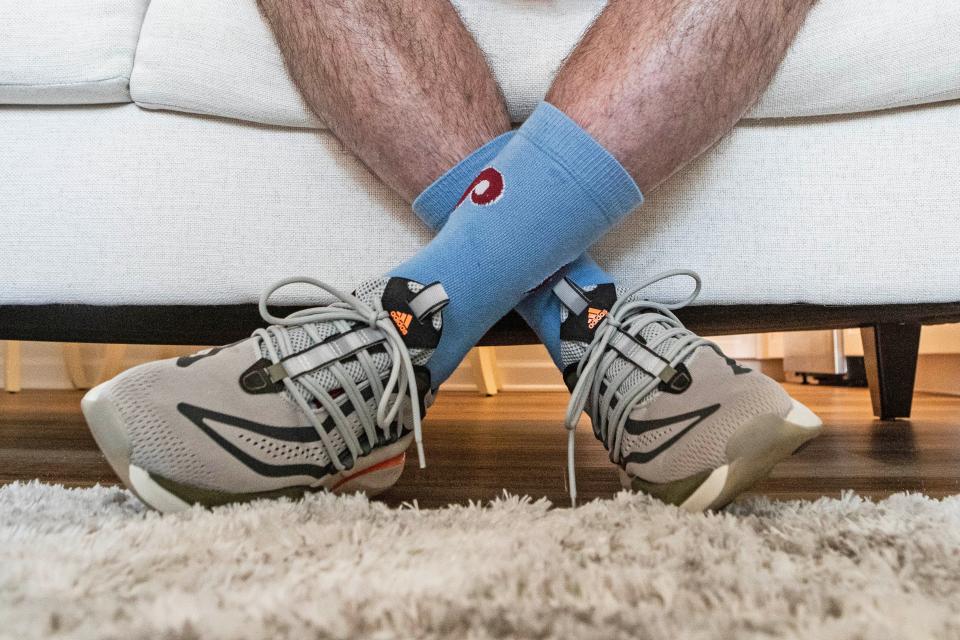
Anthony also didn’t know just how dangerous xylazine was. Aside from its addictive properties, it slows a person’s heart rate and breathing, sometimes putting them in a stupor that makes them look zombielike – hence the nickname.
While the opioid-reversing drug naloxone can save a person’s life if they overdose on fentanyl, it has no effect on xylazine. There is currently no reversal agent for xylazine approved for use in humans, meaning someone who overdoses on fentanyl laced with the drug may breathe normally after receiving naloxone, but can still be sedated from the xylazine.
Additionally, because the drug, which comes in powder form, is acidic, it eats away at a person’s skin. If an intravenous user injects it into a vein, it can cause it to burst. But more often than not, addiction specialists say users miss, resulting in the xylazine-fentanyl mixture traveling under a person’s skin, killing the tissue as it goes.
Many IV users will then continue injecting into the open wound, which frequently gets infected. In the warmer months, those who live on the street are susceptible to flies and other bugs, which land in the gaping lesions and lay eggs.
While Anthony never faced this – he had a roof over his head and was able to keep infections at bay with regular cleaning and bandages, he said – he’s seen photos of people on the streets of Kensington with maggot-infested wounds.
Yet even keeping his arms infection-free wouldn’t prove enough. In just a few short months, Anthony’s skin was mostly necrotic, the xylazine starting to eat into his muscle. He knew he needed help.
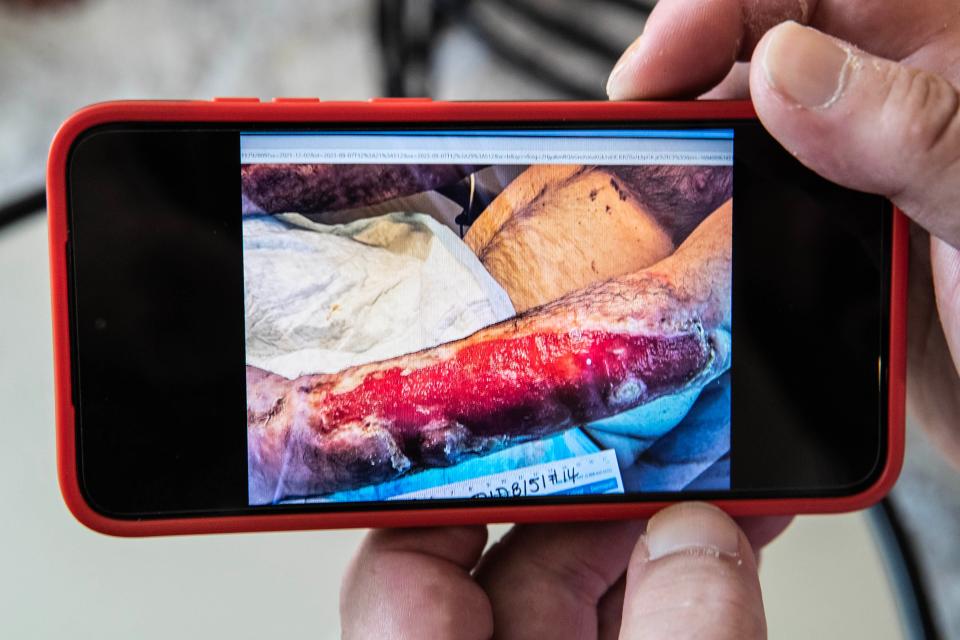
Physicians at Beebe Hospital, where he went first, believed he was going to need a double arm amputation. While doctors at Christiana Hospital might have the same prognosis, he’d heard good things about how the health care system dealt with drug users.
As the days got warmer and his arms got worse, he decided it was worth a shot.
‘Not a moral failing’
The moment Anthony made his way to the hospital’s check-in desk, he knew he was in good hands.
Right off the bat, he said, “there was just no prejudice.”
“It was obvious I was an addict,” he recalled. “But at other places, they look at you like, ‘Here’s another guy searching to get high.’”
The staff at the Stanton facility, he said, treated him as they would any other patient. Lisa Wallace, nurse practitioner and director of ChristianaCare’s addiction medicine program, said this is intentional.
“Substance use disorder is a disorder of the brain,” she said. “It is a chronic, relapsing and remitting disease just like any other chronic disease like heart disease or diabetes, and it needs to be treated as such.”
While the health care system has long understood this – it's also something that those at the forefront of the nation’s opioid crisis have tried to stress for years – it has only recently gained significant traction elsewhere.
In part, this is because the stigma surrounding drug use is so powerful. For decades, the prevailing belief among many – which is changing, albeit slowly – is that users choose this life.
As a result, those struggling with addiction often aren’t treated equitably, whether in a hospital setting or elsewhere in society.
But Anthony said he doesn't know a single person who ever imagined they’d become addicted.
“There’s pain and suffering and all this other stuff that goes along with being addicted, but the view is that you deserve it because you’re the one that stuck the needle in your vein to begin with,” Anthony said.
“But what about somebody that gets hit by a car and that wasn’t their fault?” he continued. “They also have pain and suffering and are treated (accordingly), so why not us?”
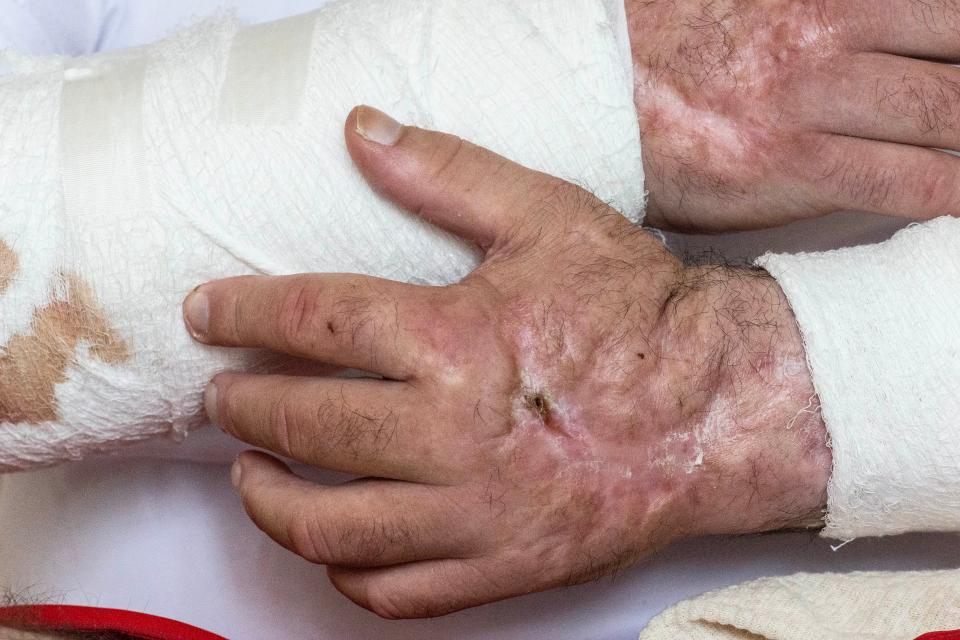
ChristianaCare recognizes this, Wallace said.
For many years, Wallace said, the health system has worked to help staff understand that addiction “is not a character flaw” and that patients need “understanding and acceptance just as much as they need medical treatment.”
“It's not a moral failing; it's not the result of bad parenting,” Wallace said. “And it's certainly not the hedonistic pursuit of euphoria.”
Still, Wallace stressed that compassion alone won’t treat patients. That's why ChristianaCare has developed a comprehensive model to address pain and withdrawal – a phenomenon so powerful that users will wait until they are at death’s door to seek medical help.
For the majority of people who, thankfully, Anthony said, have never experienced withdrawal, it’s nearly impossible to comprehend the experience. And while it varies from person to person – it’s typically worse the longer a person has been using opioids – symptoms are generally described as flu-like.
“You feel like your stomach’s being ripped out and the leg restlessness is unbearable, to the point where you feel like you want to kick your feet right off your legs,” Anthony said. “The nausea, the hot spells, the cold spells – sometimes it feels like a knife is cutting right through you.”
Then there are the sleep issues.
Even after many of the acute withdrawal symptoms dissipate, insomnia often persists for months, Anthony said. Finding – and then maintaining – a new sleep schedule can be frustrating and exhausting, but even then it’s “like your mind and body won’t rest.”
No one wants to be addicted, Anthony stressed. But for many, the dope sickness is too daunting to face.
“The first friend I lost to this committed suicide,” Anthony said. “He was a big guy, but he had told me that one of those tiny pills controlled his life so much that he wanted to die.”
That was before Anthony had ever tried Percocet, and at the time he couldn’t understand where the friend was coming from. But once he became addicted, he learned the man was right.
“Suicide over a pill?” Anthony said. “But then in a couple of years, I’m trying, too.”
‘I knew that I had made it’
For decades, the prevailing treatment model for those trying to get sober has been a period of detox followed by inpatient or outpatient treatment at a facility. Sometimes, detox centers are offered at treatment facilities. Other times, users have to travel elsewhere.
The problem with this model, Anthony said, is that for years, many detox facilities required users to quit “cold turkey,” given withdrawal symptoms, though excruciating, are generally not life-threatening. (Detoxing from alcohol, however, can be very dangerous.)
While many facilities have now adopted a medication-based approach to withdrawal, some – including hospitals – still do not. As a result, users who need medical care will frequently forgo it until their conditions are so dire that they require extended periods of hospitalization.
Such was the case with Anthony, who was admitted to Christiana Hospital almost immediately after entering the facility.
He was in “very bad shape” – his arms were worse than even he realized, and he also had a severe case of coronavirus.
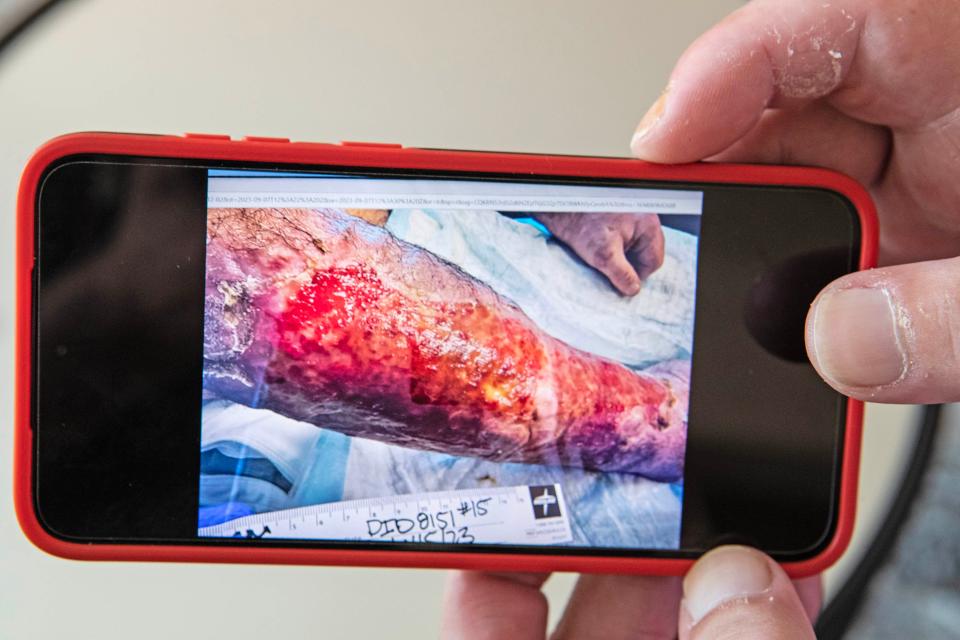
He was intubated twice, and the first day or two on the ventilator were touch-and-go, he said. Doctors weren’t sure if he’d make it to surgery to repair his arms.
When Anthony awoke after having the breathing tube removed, he was told that several people would be working with him. One doctor, he said, made it clear that “we aren’t gonna get you high here.”
But the hospital also knew that in order for the 51-year-old to get life-saving treatment, they had to make him comfortable enough that he wouldn’t leave to stave off withdrawal sickness. From this, a plan was born.
Once he was stable, he underwent surgery to repair his arms. It was the beginning of a long process, but doctors were hopeful. And when Anthony emerged from the procedure, he, too, was optimistic.
“It was a big woosh, and I knew that I had made it,” he said. “I still felt dope sick and I was still getting sick. But they gave me Dilaudid (a strong opioid painkiller) to make my withdrawal bearable and manage all the pain I was going through with my arms.”
Wallace said the goal of the addiction medicine program is twofold: to address opioid withdrawal and deal with pain.
To do this, those with substance use disorder are often started on high-dose opioids, which are slowly tapered off during a patient’s stay. Some patients require as long as six or eight weeks in the hospital, so it’s doable, Wallace said.
As patients are weaned off opioids, they’re transitioned to medication for opioid use disorder such as methadone; buprenorphine (more commonly known by the brand name of Suboxone); or extended-release naltrexone, which works by blocking the effects of narcotics.
Then, once they’re taking a non-opioid – Anthony said he takes 70 mg of methadone – and nearing discharge, case workers with “Project Engage,” an early intervention program aimed at connecting patients with community-based substance use disorder treatment programs and other resources, jump in.
“We identify, first of all, what is it that you want?” Wallace said. “Secondly, what works for your life and how can we help you to get there?”
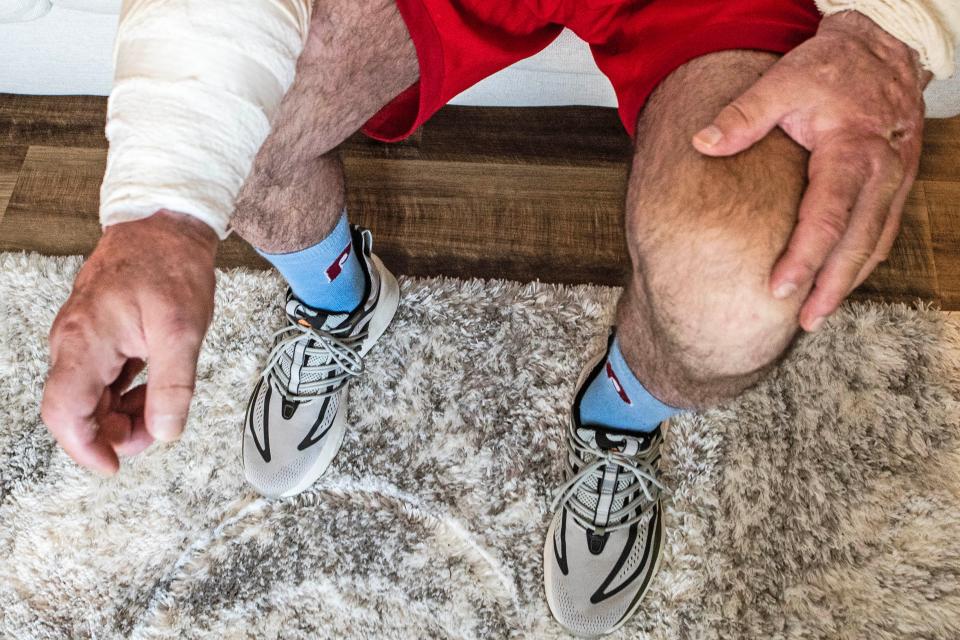
Some patients, she said, want to transition to a residential substance use treatment program, while others want an intensive outpatient program. Still others, like Anthony, just want to follow up on methadone through an opioid treatment center and receive counseling there.
“All of these arrangements are made before the patient leaves the hospital,” Wallace said. “We don't want any cracks in the sidewalk – we want to assure it’s a very smooth transition for all of our patients.”
Since his discharge earlier this year, Anthony has continued receiving care for his arms, which included plastic surgery. They remain bandaged and he’ll likely live with scars for the remainder of his life, but he’s happy to still have his limbs.
More importantly, however, he’s hopeful that the treatment he received at Christiana Hospital – both the medical care and how the staff viewed him – will become the norm rather than the exception. And, he said, he believes it may help him remain clean for good.
“There’s a better way to treat people, and they do that,” Anthony said. “I’d say to anybody that’s going through what I went through: Please don't waste any more time.
“They’re gonna make it so you make it, and you’re gonna be OK.”
Got a tip? Send to Isabel Hughes at ihughes@delawareonline.com or 302-324-2785. For all things breaking news, follow her on Twitter at @izzihughes_
This article originally appeared on Delaware News Journal: Delaware man credits Christiana Hospital with saving his limbs, life

